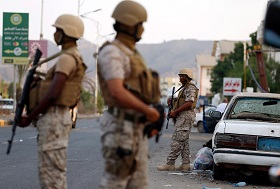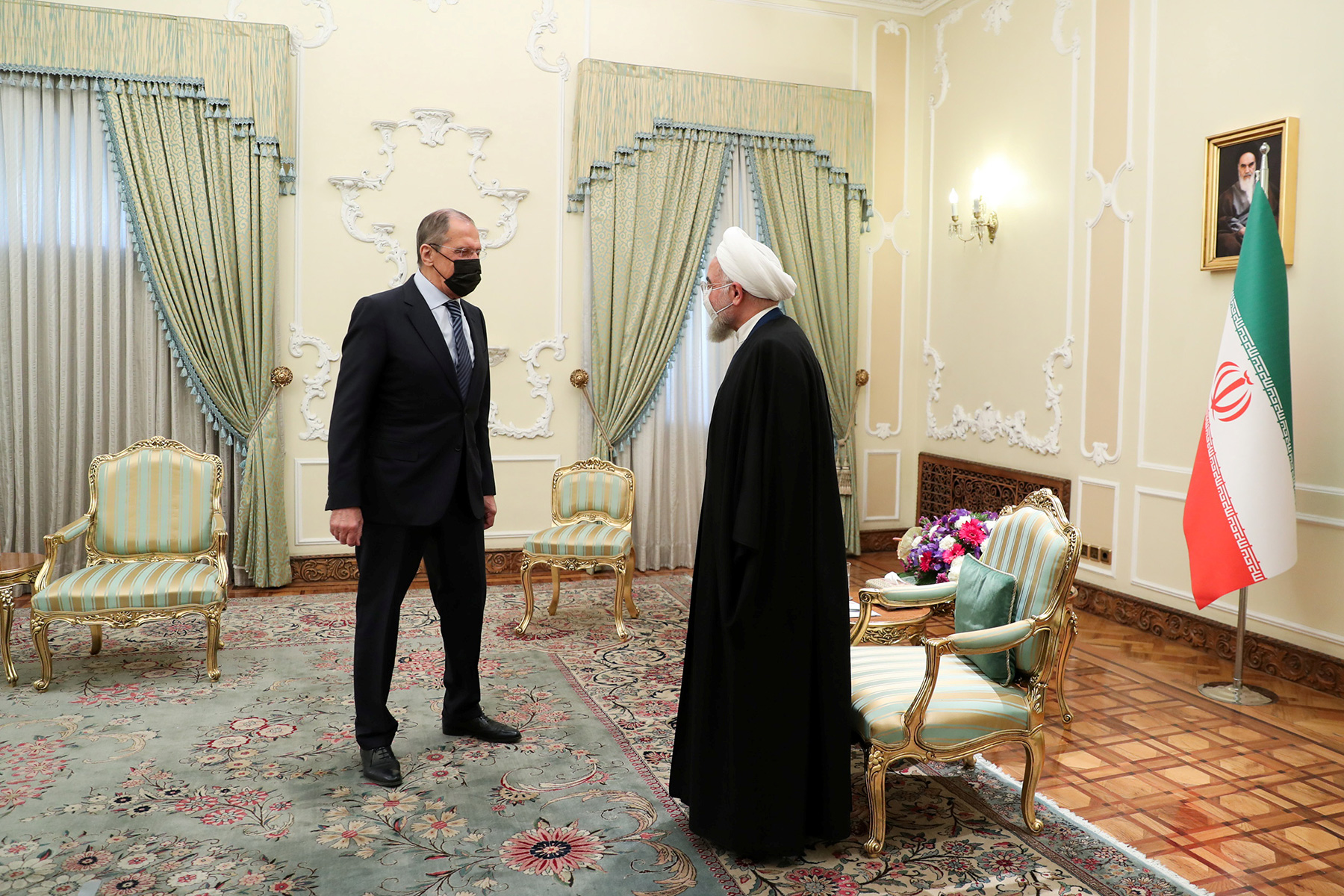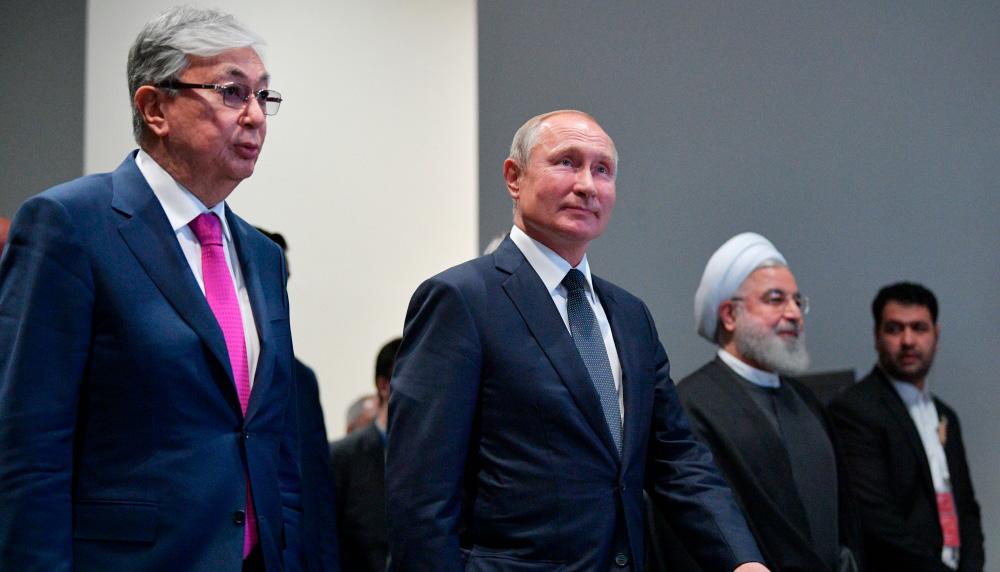China desires a completely stable Middle East with predictability in its trade and economic affairs for BRI. As China is drawn by its growing BRI interests into closer engagement with the region, it may well accustom itself to the reality that such stability can only come when one of the Middle East’s clashing geopolitical blocs subdues its rivals in a comprehensive fashion to establish a rigid balance of power, strongly affixed in its favor.
In this event, Israel is opportunely positioned to sell its own desired Middle East balance of power to China as its best chance at a region best suited for BRI’s growth. This balance of power, of course, entails neutralizing Iran’s status as a regional power.
Rather than take issue with such an aggressive policy, China’s economy and BRI-centric criteria may deem it the quickest route toward regional de-escalation in the form of Israel halting its attacks after target states agree to cut back ties with Iran. Also, the resulting lopsided regional balance of power featuring Israeli hegemony after the isolation of its Iranian rival is something China’s economy and BRI-centric criteria will find useful as a leading pro-BRI state at the helm of Middle East affairs.
Despite the virtual guarantee of support from its traditional partners in the U.S., Israel did not opt to accost China for the Pact. This itself arguably marked a crossroads-moment for Israel’s geostrategic orientation, beginning a transition from relying almost entirely on coercive hard measures against Iran—underwritten and largely implemented by the U.S.—to exploring geoeconomics, multilateralism and other avenues yielding new opportunities to tackle it—rubrics under which China seems at present to offer more than the U.S.
This author published an analysis in The Tehran Times in December 2020, part of which assessed how China would factor into Israel’s Middle East-wide conflict with Iran.
The analysis forecast an Israeli strategy to engineer an overlap between China’s Middle East security vision and its own as regards Iran. This strategy would entail considerable tactical and diplomatic maneuvering to persuade Beijing, which upholds neutrality in foreign conflicts as a tenet of its foreign policy doctrine, that Israel’s security vision of a Middle East completely extricated of Iranian influence is the only attainable status quo that would be stable enough for Beijing to fulfill its objectives in the tumultuous region pertaining to its Belt and Road Initiative (BRI), a global trade infrastructure megaproject.
Moreover, the crux and outlines of this strategy were described and endorsed in a recent report published by the Tel Aviv-based Institute of National Security Studies (INSS) as Israel’s way toward using the Chinese factor to its advantage over Iran.
China in the Israel-Iran conflict
The report was obtained by The Jerusalem Post a day prior to its publication by the INSS to be posted with the dramatic headline ‘China could save Israel from Iran – Report’, signifying the growing attention in Israel to China as an increasingly important factor in its clash with Iran.
China’s large investments in Israel’s transport infrastructure and tech industry over the last decade have notably familiarized the Asian giant with the Jewish state in the economic sphere. At the same time, the more recent discourse on China in connection to the Israel-Iran conflict has been spurred by the China-Iran 25 Year Trade and Strategic Pact leaked to the public in July 2020 and formally signed in March 2021.
The Pact gives Tehran a measure of relief against U.S. sanctions given China’s well-established willingness to trade with sanctioned countries. Moreover, in relations with Beijing, Israel does not enjoy any status similar to that it holds in the U.S. as a key pro-sanctions foreign policy-driver.[1] It thus cannot influence Beijing’s trade-and-investment portfolio in Iran ‘from the inside’ to offset the Pact’s benefits to Iran in any way. Israel also lacks the manner of external leverage over China, which would logically justify approaching it directly with complaints about the Pact.
Indeed, the INSS report, authored by Dr Kevjn Lim, Senior Risk Advisor and Iran expert at the IHS Markit, notes:
‘Directly persuading China to sever or significantly downgrade its ties with Iran is unrealistic, and probably even counterproductive. Such a strategy would be seen as heckling a major power, one that prides itself on maintaining good ties with all regional actors, into taking sides. Moreover, China’s motives for deepening cooperation with Iran have little to do with Israel.’
However, avenues yet exist for Israel to indirectly inculcate its objectives toward Iran and the nation’s regional presence into China’s mix of diplomatic and economic interests in the Middle East, somewhat bypassing China’s avowed neutrality. Israel’s own role in BRI, which is the broader context behind the China-Iran Pact, as well as China’s inevitable move to closer engagement with the Middle East are key to such maneuvering.
Israel’s edge in the BRI paradigm
China desires a completely stable Middle East with predictability in its trade and economic affairs for BRI. As China is drawn by its growing BRI interests into closer engagement with the region, it may well accustom itself to the reality that such stability can only come when one of the Middle East’s clashing geopolitical blocs subdues its rivals in a comprehensive fashion to establish a rigid balance of power, strongly affixed in its favor.
In this event, Israel is opportunely positioned to sell its own desired Middle East balance of power to China as its best chance at a region best suited for BRI’s growth. This balance of power, of course, entails neutralizing Iran’s status as a regional power.
Israel hosts China’s most substantial and important BRI assets in the Middle East. China’s contracts to develop and manage Israel’s Mediterranean ports of Haifa and Ashdod as well as build the ‘Red-Med Railway’ linking the Mediterranean to the Red Sea via Ashdod-Eilat Port make Israel the connecting node for BRI from East to West, thus turning the initiative truly global. Besides, Israel rejected U.S. requests to inspect Chinese activities in Haifa Port, demonstrating its resolve to protect its place in BRI from China’s great power rival if need be.
A properly BRI-centric Chinese outlook on the Middle East’s future in security, military and strategic terms, therefore, finds sense in aligning with Israel.
Moreover, as analyzed by the author’s aforementioned analysis, Iran—while important to BRI—cannot match Israel’s geographical centrality to the megaproject, which means it is quite ill-equipped to hedge against such a Chinese tilt toward Tel Aviv. To go with this, the Iraq-Syria-Lebanon belt Iran uses as its geostrategic Forward Defence bulwark against Israel still lacks the law and order required for China to incorporate these zones of Iranian influence in the Levant into BRI despite its natural interest in doing so.
Israel’s Middle East security ‘solution’ and China’s quest for stability
While the previously mentioned factors place Israel atop Iran in China’s evolving BRI-centric Middle East outlook, it is Beijing’s economy-and-stability first approach which may lead to it tacitly approving of Israel’s method of dealing with Iran. This method involves both overt and covert, or asymmetrical, attacks against regional states seen by Tel Aviv as the key pillars of Iran’s regional presence, especially Iraq-Syria-Lebanon, underpinned by tacit demands that they sever their alliances with Iran as a pre-condition to Israel ceasing the attacks.
Rather than take issue with such an aggressive policy, China’s economy and BRI-centric criteria may deem it the quickest route toward regional de-escalation in the form of Israel halting its attacks after target states agree to cut back ties with Iran. Also, the resulting lopsided regional balance of power featuring Israeli hegemony after the isolation of its Iranian rival is something China’s economy and BRI-centric criteria will find useful as a leading pro-BRI state at the helm of Middle East affairs.
This overall scenario is the very strategy Lim advocates for Israel to employ in the context of its developing triangular dynamic with China and Iran. It proposes that Israel should:
‘… constantly persuade Beijing, as a non-partisan actor seeking predictability especially in regional trade and business, to pressure Iran into moderating its destabilizing conduct.’
Lim then states that China cannot attain the Middle East stability it seeks for BRI if Israel’s attacks on regional states—premised on countering Iran—continue and thus that China should help Israel fulfil their objectives vis à vis Iran in order to bring them to an end:
‘Still, for so long as Iran’s leadership continues to threaten Israel with destruction and build up the means that would allow it to potentially pursue that end, Israel’s decisionmakers would not be misguided in continually seeking to degrade and disrupt Iran’s diplomatic, along with economic and military options, and certainly its nuclear program. China should pay heed if it is to become a more responsible global power. And that is because it is one of only very few actors, if willing, capable of changing the balance in the Middle East in favor of stability.’
Thus, Lim’s report evidently considers Israel’s region-wide militarism a bargaining chip of sorts to indirectly push China toward pressuring Iran into conceding to Israeli demands—such as abandoning its Forward Defence bloc in Iraq-Syria-Lebanon. Moreover, the report parallels the author’s Tehran Times analysis in citing Israel’s geographical centrality to BRI in East-West connectivity terms as a key source of its clout and capacity to so influence China’s view of the Middle East:
‘Israel’s potential as an overland and maritime bridge between regions – from the Red Sea through the Mediterranean, from the Persian Gulf and the Levant to the Mediterranean and Europe via Jordan and Haifa, or from Africa through to the Middle East – would raise its importance, in parallel to Iran’s own land bridge, along China’s Belt and Road Initiative. This in turn could give Beijing a more compelling reason to intervene as buffer between both regional adversaries.’
Israel, Iran and diplomatic disparities
Another source of comparative advantage for Israel over Iran in orienting China’s Middle East posture to its favor lies in the diplomatic realm.
As discussed in the previous sections, the imperative of consolidating and growing BRI in the Middle East is ultimately sufficient for China to accept a regional status quo established via aggressive means, such as what Israel presently aims for, so long as it is stable and sustainable. However, Beijing would welcome any multilateral diplomatic cover and legitimacy provided to such a status quo as a burden lifted off its valued image as a neutral actor.
The author’s earlier analysis cites U.S., Russian and Gulf Cooperation Council (GCC) support for Israel’s stance on dismantling Iran’s regional presence as its national security prerogative and as another source of clout in aligning China with itself over Iran. The likelihood of recognition by such an array of important stakeholders in Middle East affairs of Israel’s desired regional status quo hedges against the prospect of Chinese hesitancy in accepting such a ‘post-Iran’ Middle East as a major BRI hub.
Lim refers to such a consensus favoring Israel over Iran as a ‘critical mass of shared diplomatic, economic, and military interests in the Middle East opposed to Iran’ which China may in turn acknowledge as a dominant regional reality and cooperate with.
Furthermore, the INSS report elaborates that the sustainability of this critical mass will translate into it shaping not only China’s commercial approach toward the Middle East ‘but also how it thinks about its strategic, diplomatic and security priorities in the region.’ This would be especially useful to Israel, enabling it to expand the foundations of its understanding with China on the merits of an Israel-led, ‘Iran-free’ Middle East from just BRI to other areas such as terrorism and arms control.
Moreover, China’s historical voting pattern at the UN against Israel for its violations of international law, especially with regard to the situation in Palestine, will not give Beijing second thoughts about embracing multilateral cooperation led by Tel Aviv. Even prior to the latter’s importance to China greatly rising with the advent of BRI, China consistently separated the legal and moral pretexts behind its UN votes from the pretext of ‘stability through development’ which insures economic relations with Israel. Consequently, China-Israel trade and investment volumes have grown throughout the years that China has voted against Israel at the UN, remaining unchanged even by the U.S.-Israeli ‘Deal of the Century’ announced on Palestine in January 2020 which violated all relevant UN resolutions.
Another important factor is the lack of diplomatic means and resources Iran bears to forestall such a development of diplomatic synergy between China and Israel.
The interoperability Iran has developed with its Forward Defence allies in the military-strategic domain during conflicts, such as the Syrian War (2011-onward) or the war against ISIS in Iraq (2014-17), has not been replicated in the diplomatic domain. This hinders Iran from rallying and presenting them to China as a pre-emptive spoiler to any Israel-proposed multilateral legal or security framework in the region.
For example, Iraq and Syria presently perceive sustained diplomatic interaction with foreign capitals as a pathway toward crucial foreign investments in their respective post-war reconstruction economies. This could well be jeopardized by them declaring long-term support for any multilateral regional framework Iran might formally propose as a riposte to Israel, with interested investors potentially interpreting this as a trigger for the U.S. Treasury Department to broaden its Iran-focused surveillance-and-sanctions net over the Iraqi and Syrian economies.
In addition to this, the decision in late 2018 by the U.S. Trump administration to unilaterally exit the nuclear deal sealed with Iran in 2015 entrenched the skepticism in Tehran regarding multilateralism. Indeed, whilst remaining interested in reviving the JCPOA to escape sanctions, Iran has steadily sidelined its diplomats, as represented by the Ministry of Foreign Affairs’ role in foreign policy, in favor of its Islamic Revolutionary Guard Corp (IRGC). Given that the IRGC is an especially-heavily sanctioned part of the Iranian state, this shows that Iran does not anticipate much more interaction with non-JCPOA related diplomacy, let alone leading multilateral projects itself.
Thus, if China is to develop consternation about accepting broad Israeli proposals backed by the U.S., GCC and Russia regarding the Middle East’s collective security and legal regimes, it will not be the result of any potent diplomatic maneuvering by Iran.
Beyond the crossroads
Foregoing the urge to pair with the U.S. against China as a reaction to Beijing’s 25 Year Pact with Iran was far more than Israel’s acceptance of a fait accompli. It was instead a strategic abstention by Tel Aviv, usually uncompromising in its demands for Iran’s full economic isolation, which illustrated its view of China as an asset in the long term rather than an obstacle with regard to the campaign against Iran.
Despite the virtual guarantee of support from its traditional partners in the U.S., Israel did not opt to accost China for the Pact. This itself arguably marked a crossroads-moment for Israel’s geostrategic orientation, beginning a transition from relying almost entirely on coercive hard measures against Iran—underwritten and largely implemented by the U.S.—to exploring geoeconomics, multilateralism and other avenues yielding new opportunities to tackle it—rubrics under which China seems at present to offer more than the U.S.
It is difficult to make exact predictions as to what the various areas of potential Israel-China convergence described in this analysis will yield in terms of outcomes and joint policy initiatives and how much impact they will have on the Israel-Iran conflict. However, it is evident that the pathways toward these results are clear enough to warrant elite quarters in Israel prescribing new, unprecedented strategies for the Jewish state to obtain them.
1. Sasan Fayazmanesh, “The Politics of the U.S. Economic Sanctions Against Iran.” Review of Radical Political Economics 35, No 3 (2003): 221-240








